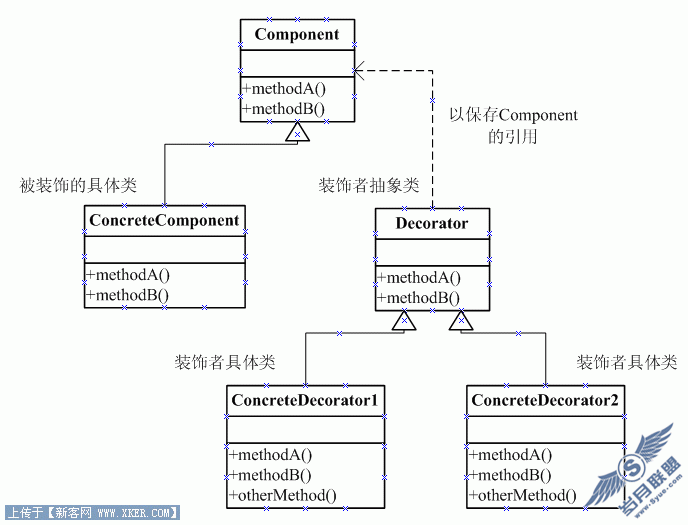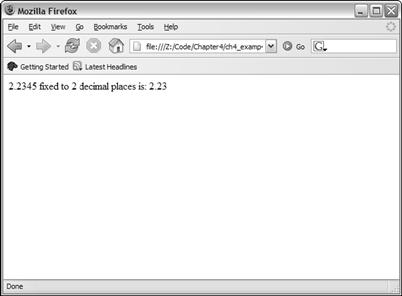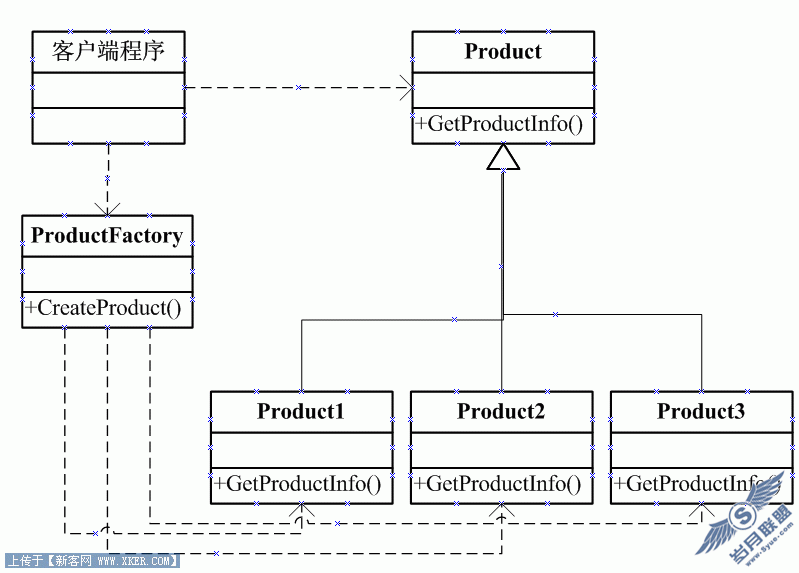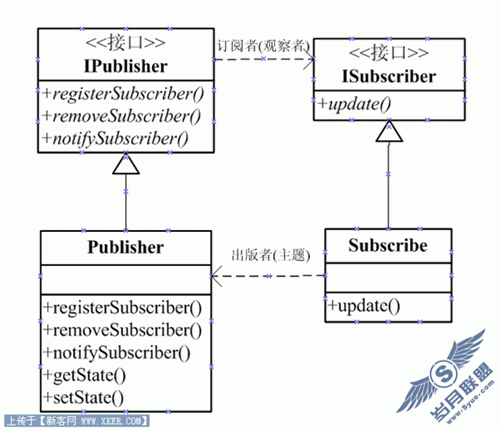Javascript乱弹设计模式系列(3) - 装饰者模式(Decorator)
前言
博客园谈设计模式的文章很多,我也受益匪浅,包括TerryLee、吕震宇等等的.NET设计模式系列文章,强烈推荐。对于我,擅长于前台代码的开发,对于设计模式也有一定的了解,于是我想结合Javascript来设计前台方面的“设计模式”,以对后台“设计模式”做个补充。开始这个系列我也诚惶诚恐,怕自己写得不好,不过我也想做个尝试,一来希望能给一些人有些帮助吧,二来从写文章中锻炼下自己,三来通过写文章对自己增加自信;如果写得不好,欢迎拍砖,我会虚心向博客园高手牛人们学习请教;如果觉得写得还可以,谢谢大家的支持了:)
概述
在软件开发中,经常因为需求变动而需要扩展功能,想到的可能是继承类的方式进行扩展(还可以是组合方式(这个别篇另谈)),但是随着功能越来越多,子类也会越来越多,这样很不利用维护;而且需求的变动还导致部分功能也许不再需要,所以能够按需求来动态地扩展所需要的功能,是很好的解决方式;这样,装饰者模式应油而生,它动态地解决了功能扩展的问题
这里借用《Head First Design Pattern》归纳的五点:
装饰者和被装饰者对象有相同的超类型
你可以用一个或是多个装饰者包装一个对象
既然装饰者和被装饰对象有相同的超类型,所以在任何需要原始对象(被包装)的场合,可以用装饰过的对象代替它
装饰者可以在所委托被装饰者的行为之前与/或之后,加上自己的行为,以达到特定的目的
对象可以在任何时候被装饰,所以可以在运行是动态地、不限量地用你喜欢的装饰者来装饰对象
定义
装饰者模式是动态地将责任附加到对象上。若要扩展功能,装饰者提供了比继承更有弹性的替代方案。
类图 
原理分析
现在结合Javascript,开始介绍Javascript装饰者模式,这里我举个多功能复印机的例子来说明:
1. 首先最开始我定义一个复印机接口,它会什么呢?它有说明书,要插电,可查看时间,可修理,可进行复印,有价格
那就可以这样子得到:
var IManifdder = new Interface("IManifdder", [["getDescription"],["electrify"],["watch"],["repair"],["duplicate"],["getPrice"]]);
2. 然后定义一个继承于该复印机接口的类Manifdder:
function Manifdder() {
Interface.registerImplements(this, IManifdder);
}
Manifdder.prototype = {
getDescription : function() {
//
},
electrify : function() {
//
},
watch : function() {
//
},
repair : function() {
//
},
duplicate : function() {
//打印操作
},
getPrice : function() {
return 500.0;
}
};
3. 接着定义一个继承复印机接口的装饰者抽象类:
function ManifdderDecorator(manifdder) {
this.manifdder = manifdder;
Interface.registerImplements(this, IManifdder);
}
ManifdderDecorator.prototype = {
getDescription : function() {
return this.manifdder.getDescription();
},
electrify : function() {
return this.manifdder.electrify();
},
watch : function() {
return this.manifdder.watch();
},
repair : function() {
return this.manifdder.repair();
},
duplicate : function() {
return this.manifdder.duplicate();
},
getPrice : function() {
return this.manifdder.getPrice();
}
};
每个装饰者都有一个变量来保存IManifdder的引用,现在来实现它的具体类:
//中国制造
function MakeInChinaDecorator(manifdder) {
ManifdderDecorator.call(this,manifdder);
}
inheritClass(MakeInChinaDecorator, ManifdderDecorator);
MakeInChinaDecorator.prototype.electrify = function() {
return this.manifdder.electrify() + ". 中国标准电压为220V.";
};
MakeInChinaDecorator.prototype.getPrice = function() {
return this.manifdder.getPrice() + 100.0;
};
//日本制造
function MakeInJapanDecorator(manifdder) {
ManifdderDecorator.call(this,manifdder);
}
inheritClass(MakeInJapanDecorator);
MakeInJapanDecorator.prototype.electrify = function() {
return this.manifdder.electrify() + ".日本标准电压为110V.";
};
MakeInJapanDecorator.prototype.getPrice = function() {
return this.manifdder.getPrice() + 200.0;
};
其中它覆盖了抽象类中的electrify和getPrice方法;
现在执行它们:
var manifdder = new Manifdder();
alert(manifdder.getPrice()); // 得到500.0
manifdder = new MakeInChinaManifdder(manifdder);
alert(manifdder.getPrice()); // 得到600.0
如果再需要添加一个具体装饰类MakeInAmericaDecorator,只要再定义一个继承抽象类的子类即可;
3. 什么叫做被装饰者方法之前或者之后,添加行为呢?接着看下下面的例子:
在方法之后添加行为:
function MakeInChinaDecorator(manifdder) {
//
}
inheritClass(MakeInChinaDecorator, ManifdderDecorator);
//
MakeInChinaDecorator.prototype.getPrice = function() {
return this.manifdder.getPrice() + 100.0;
};
实际上刚才上面的那个例子,就是方法之后添加行为的方式,当实例化MakeInChinaDecorator对象的时候,它的装饰目的是为了价格上的差异,当调用getPrice(方法之后)的时候,价格上才得以体现出来,在原来价格的基础上加上100.0。
而在方法之前添加行为,我这里在增加一个复印机的颜色装饰类:
function ColorDecorator(manifdder, color) {
ManifdderDecorator.call(this,manifdder);
this.color = color;
}
inheritClass(ColorDecorator, ManifdderDecorator);
ColorDecorator.prototype.getDescription = function() {
return this.manifdder.getDescription() + ": " + "它的颜色是" + this.color;
};
当实例化ColorDecorator对象的时候,它的装饰目的已经在构造函数中得到颜色上的体现,因此它是在getDescription()方法调用之前就得到体现了。
现在执行它:
manifdder = new ColorDecorator(manifdder, "白色");
alert(manifdder.getDescription()); //得到“它的颜色是白色”
4. 现在我要实现多功能复印机,还具有打印,扫描,传真功能,那么开始添加它们的装饰类:
function PrintDecorator(manifdder) {
ManifdderDecorator.call(this,manifdder);
}
inheritClass(PrintDecorator, ManifdderDecorator);
PrintDecorator.prototype.getDescription = function() {
return this.manifdder.getDescription() + ": " + "它具有打印功能. ";
};
PrintDecorator.prototype.getPrice = function() {
return this.manifdder.getPrice() + 220.0;
};
PrintDecorator.prototype.print = function() {
return "Print!";
};
现在执行它:
var manifdder = new Manifdder();
manifdder = new PrintDecorator(manifdder);
alert(manifdder.print()); //得到“Print!”
从结果可以看出,manifdder引用的对象具有方法print;
如果我继续装饰一个MakeInChina:
var manifdder = new Manifdder();
manifdder = new PrintDecorator(manifdder);
manifdder = new MakeInChinaDecorator(manifdder);
alert(manifdder.print()); //得到“manifdder.print is not a function”
从结果可以看出,print已经找不到了。
这说明MakeInChinaDecorator装饰manifdder的时候,它的父类ManifdderDecorator不包含print方法,所以自然就调用不到;
这个问题要如何解决呢?我们看到ManifdderDecorator的构造函数传进来一个manifdder的引用,通过它的引用我们可以得到它可能含有的新方法,比如print,通过和接口方法的比较,将新进的方法,动态添加进ManifdderDecorator中,于是我们修改ManifdderDecorator抽象类,如下所示:
function ManifdderDecorator(manifdder) {
this.manifdder = manifdder;
this.interface = IManifdder;
for(var key in this.manifdder)
{
if(typeof this.manifdder[key] !== "function") //判断是否为方法类
continue;
var i;
for(i = 0, len = this.interface.methods.length; i < len; i++) {
if(key == this.interface.methods[i][0]) { //通过遍历比较在接口类中是否包含此方法,如果包含返回下一个
break;
}
}
if(i < this.interface.methods.length)
continue;
var decorator = this;
//采用匿名函数调用方式来定义新方法
(function(methodName) {
decorator[methodName] = function() {
return decorator.manifdder[methodName]();
};
})(key);
}
Interface.registerImplements(this, IManifdder);
};
ManifdderDecorator.prototype = {
//
};
这样,如果在装饰类中定义了新方法,它的抽象类就会把该新方法动态定义出来,这样保证方法调用上的正确;
然后再执行刚才的代码:
var manifdder = new Manifdder();
manifdder = new PrintDecorator(manifdder);
manifdder = new MakeInChinaDecorator(manifdder);
alert(manifdder.print()); //得到“Print!”
成功调用了!
其他扫描,传真功能,和打印功能类似,创建ScanDecorator和FaxDecorator,这里不在多说了。
实例分析
今天要介绍的场景是个 个人服装秀(类似于QQ秀)的网页范例,可以更换头像,上衣,腰裤,背景等。
效果图先让大家瞧瞧:


这里介绍几个核心代码:
1. 添加IPerson.js的IPerson接口类:
var IPerson = new Interface("IPerson", [["getData"]]);
2. 添加PersonDecorator.js的装饰者抽象类:
PersonDecorator.js
function PersonDecorator(person) {
this.person = person;
this.interface = IPerson;
for(var key in this.person)
{
if(typeof this.person[key] !== "function") //判断是否为方法类
continue;
var i;
for(i = 0, len = this.interface.methods.length; i < len; i++) {
if(key == this.interface.methods[i][0]) { //通过遍历比较在接口类中是否包含此方法,如果包含返回下一个
break;
}
}
if(i < this.interface.methods.length)
continue;
var decorator = this;
//采用匿名函数调用方式来定义新方法
(function(methodName) {
decorator[methodName] = function() {
return decorator.person[methodName]();
};
})(key);
}
Interface.registerImplements(this, IPerson);
}
PersonDecorator.prototype = {
getData : function() {
throw new Error("抽象方法,不能调用!");
}
}
3. 添加ConcreteDecorator.js的具体装饰者:
ConcreteDecorator.js
// 头像装饰者
function HeadDecorator(person, model) {
PersonDecorator.call(this, person);
this.model = model;
}
inheritClass(HeadDecorator, PersonDecorator);
HeadDecorator.prototype.getData = function() {
var index = this.person.head.lastIndexOf("_");
if(index != -1)
this.person.head = this.person.head.slice(0, index);
this.person.head = this.person.head + "_" + this.model;
return this.person;
};
// 上衣装饰者
function BodyDecorator(person, model) {
PersonDecorator.call(this, person);
this.model = model;
}
inheritClass(BodyDecorator, PersonDecorator);
BodyDecorator.prototype.getData = function() {
var index = this.person.body.lastIndexOf("_");
if(index != -1)
this.person.body = this.person.body.slice(0, index);
this.person.body = this.person.body + "_" + this.model;
return this.person;
};
// 腰裤装饰者
function FootDecorator(person, model) {
PersonDecorator.call(this, person);
this.model = model;
}
inheritClass(FootDecorator, PersonDecorator);
FootDecorator.prototype.getData = function() {
var index = this.person.foot.lastIndexOf("_");
if(index != -1)
this.person.foot = this.person.foot.slice(0, index);
this.person.foot = this.person.foot + "_" + this.model;
return this.person;
};
// 背景装饰者
function BackgroundDecorator(person, model) {
PersonDecorator.call(this, person);
this.model = model;
}
inheritClass(BackgroundDecorator, PersonDecorator);
BackgroundDecorator.prototype.getData = function() {
this.person.background = "bg" + this.model;
return this.person;
};
4. 添加PersonOpr.js,创建操作类:
var PersonOpr = {
display : function(person) { //显示个人秀照片
$("#imgHead").attr("src","images/" + person.head + ".gif");
$("#imgBody").attr("src","images/" + person.body + ".gif");
$("#imgFoot").attr("src","images/" + person.foot + ".gif");
$("#divBg").css("background-image", "url(images/" + person.background + ".gif)");
},
init : function() {
//初始化皮肤列表
//...
}
}
至此,装饰者模式的思路已经应用在该个人服装秀中了。
这里实现链接实例:
源代码就不提供下载了,无非就是html,js,css文件,从链接实例中可以查看源代码;
总结
该篇文章用Javascript设计装饰者模式的思路,重点从原理中分析,最后实现一个类似于QQ秀的应用网站。
本篇到此为止,谢谢大家阅读!
参考文献:《Head First Design Pattern》
《Professional Javascript Design Patterns》
出处:http://www.cnblogs.com/liping13599168/archive/2009/01/11/1373677.html










